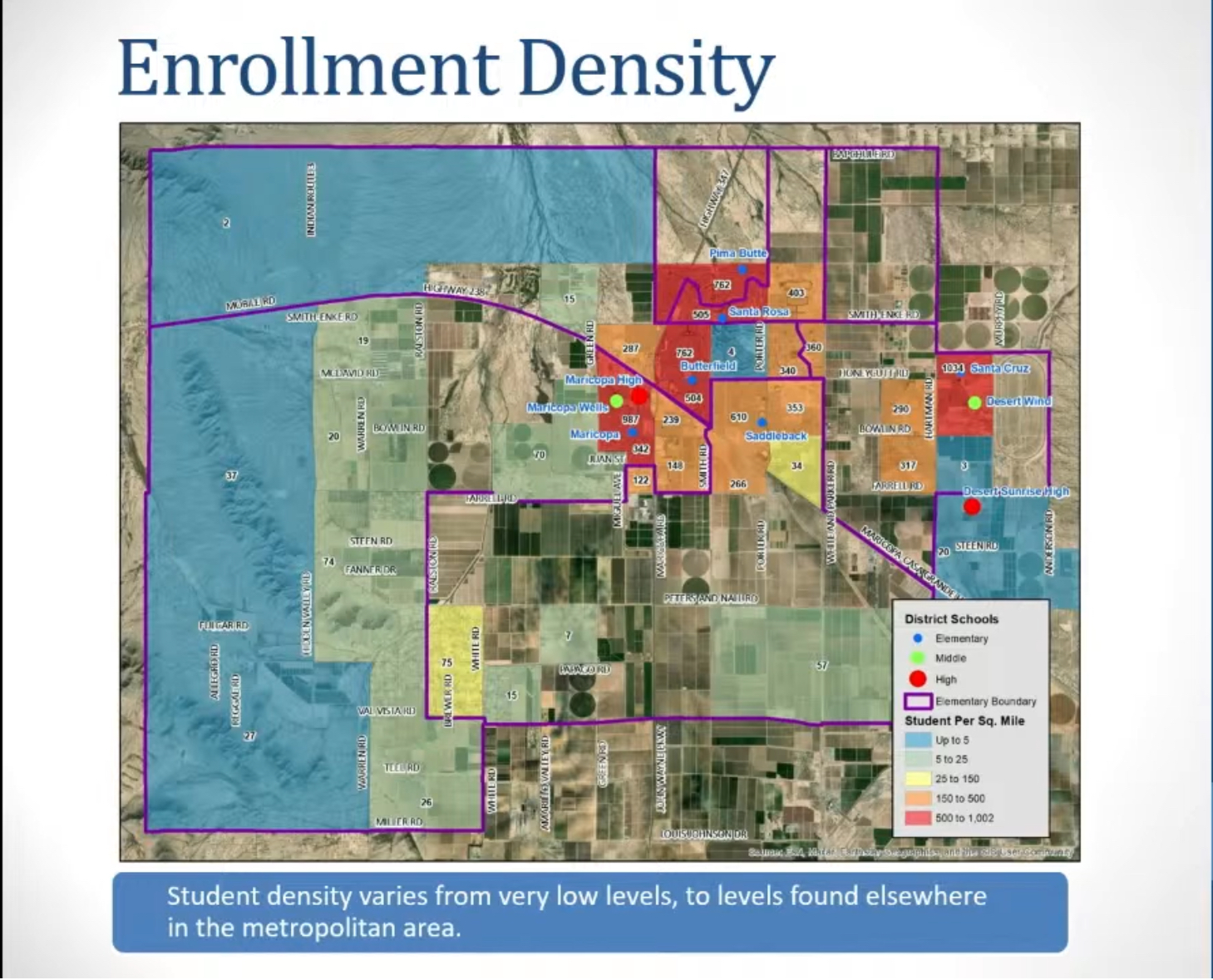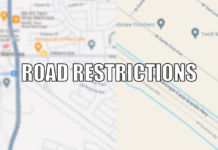Maricopa Unified School District is experiencing slower but substantial housing and school-aged population growth.
“A slightly larger portion of the increase” was offset this year by charter schools and other alternative education options, according to an expert who addressed the school board Thursday.
But it all could change in a month, a year or several years, a demographics specialist told the school board during a work session.
“One thing about Maricopa is it changes every day,” said Rick Brammer, principal at Applied Economics LLC. “If it didn’t look like it today, then it might look like that tomorrow.”
The Phoenix firm conducted a demographics study for the school district.
Although enrollment took a slide during the Great Recession from 2007 to 2010, since 2011, enrollment has grown by 70%.
That’s up 3,800 students in the past 12 years, the firm reported.
Brammer and senior associate Don Graves took a deep dive into demographic trends and residential growth that could affect the school district’s enrollment future.
Brammer said the steepest growth in MUSD is at the high schools. The slowest growth is at the kindergarten to second-grade level.
Today, the highest-density schools are Maricopa High School, Maricopa Wells and Desert Wind Middle Schools, and Maricopa, Butterfield, Santa Rosa, Pima Butte and Santa Cruz Elementary Schools.
Both of the district’s high schools are projected to grow by more than 2,500 students in the next five years, Brammer said.
The firm projects, Maricopa High School would have more than 2,800 students in a decade, and Desert Sunrise High will have nearly 2,600.
Projected elementary school enrollment increases are concentrated to Saddleback and Santa Cruz, Brammer said.
Desert Wind will see the highest growth of any school over the next decade, he said.
Charter schools within the district gained about 2,000 students since 2011.
Brammer said there are a lot of students who are not educated in MUSD at all. They commute to other Phoenix metro schools.
Brammer’s findings show that unlike the metropolis to the north, there is a higher concentration of school-aged kids from young families in Maricopa.
While the rate of single-family housing has declined with higher interest rates, multifamily housing has accelerated in Maricopa.
“Your market has grown vastly in the past 20 years,” said Graves, Applied Economics’ housing growth expert. “You’re getting more multifamily and you’re going to continue to get more multifamily.”
Even with the market slowing down, Graves said, housing is expected to continue to grow because existing subdivisions continue to build new homes, with additional subdivisions expected.
He figures the city and district will see more and more housing projects in the next two or three years, which could boost enrollment.
Meanwhile, he said single-family home construction is likely to spike again soon.
Brammer warned future enrollment levels are likely to be affected by charter schools and other educational alternatives. This injects a level of uncertainty in the school district’s enrollment growth.










![City gave new manager big low-interest home loan City Manager Ben Bitter speaks during a Chamber of Commerce event at Global Water Resources on April 11, 2024. Bitter discussed the current state of economic development in Maricopa, as well as hinting at lowering property tax rates again. [Monica D. Spencer]](https://www.inmaricopa.com/wp-content/uploads/2024/04/spencer-041124-ben-bitter-chamber-property-taxes-web-218x150.jpg)



![Maricopa’s ‘TikTok Rizz Party,’ explained One of several flyers for a "TikTok rizz party" is taped to a door in the Maricopa Business Center along Honeycutt Road on April 23, 2024. [Monica D. Spencer]](https://www.inmaricopa.com/wp-content/uploads/2024/04/spencer-042324-tiktok-rizz-party-flyer-web-218x150.jpg)



